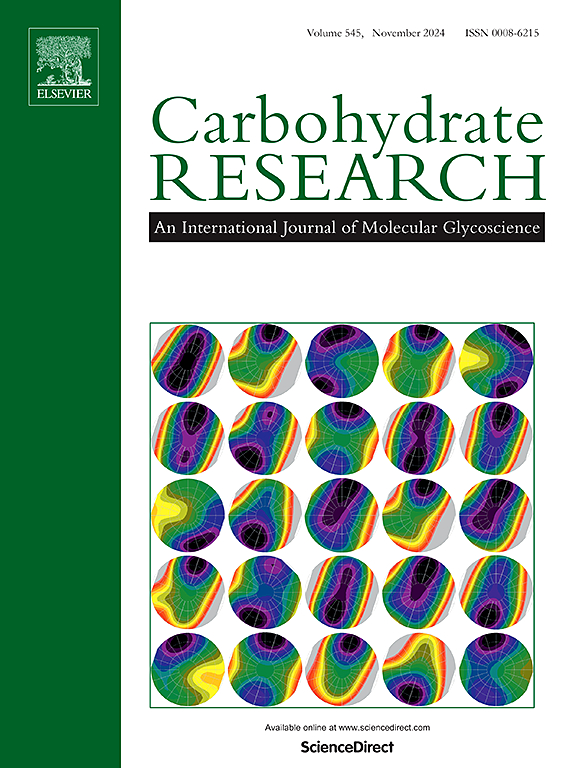A review on the biological activities and the nutraceutical potential of chitooligosaccharides
IF 2.4
3区 化学
Q3 BIOCHEMISTRY & MOLECULAR BIOLOGY
引用次数: 0
Abstract
Chitooligosaccharides (CHOS) or chitosan oligosaccharides (COS) are oligomers mainly composed of d-glucosamine (GlcN) units and structured in a positively charged, basic, amino molecule obtained from the degradation of chitin/chitosan through physical, chemical, or enzymatic methods. CHOS display physicochemical properties attractive to applications from the food to the biomedical field, such as non-toxicity to humans, high water solubility, low viscosity, biocompatibility, and biodegradability. These properties also allow CHOS to exert important biological activities, for example, antioxidant, antimicrobial, anti-inflammatory, immunomodulatory, antitumor, and hypocholesterolemic ones, besides to exhibit applications in food systems, technological, and nutraceutical potential. Therefore, this study summarized the synthesis and chemical structure, biological functions, and mechanisms of action of CHOS; with this, we aimed to contribute to the knowledge about the application of CHOS from the food to the biomedical industries.

壳寡糖的生物活性及其营养潜力的研究进展。
壳寡糖(CHOS)或壳寡糖(COS)是主要由d-氨基葡萄糖(GlcN)单元组成的低聚物,结构为带正电的碱性氨基分子,通过物理、化学或酶的方法降解甲壳素/壳聚糖而得到。CHOS具有对人体无毒、高水溶性、低粘度、生物相容性和可生物降解性等物理化学特性,从食品到生物医学领域都具有广泛的应用前景。这些特性也允许CHOS发挥重要的生物活性,例如,抗氧化、抗菌、抗炎、免疫调节、抗肿瘤和降低胆固醇,除了在食品系统、技术和营养保健方面的应用潜力之外。为此,本文就CHOS的合成、化学结构、生物学功能及作用机制进行综述;因此,我们的目标是为从食品到生物医学工业的CHOS应用的知识做出贡献。
本文章由计算机程序翻译,如有差异,请以英文原文为准。
求助全文
约1分钟内获得全文
求助全文
来源期刊

Carbohydrate Research
化学-生化与分子生物学
CiteScore
5.00
自引率
3.20%
发文量
183
审稿时长
3.6 weeks
期刊介绍:
Carbohydrate Research publishes reports of original research in the following areas of carbohydrate science: action of enzymes, analytical chemistry, biochemistry (biosynthesis, degradation, structural and functional biochemistry, conformation, molecular recognition, enzyme mechanisms, carbohydrate-processing enzymes, including glycosidases and glycosyltransferases), chemical synthesis, isolation of natural products, physicochemical studies, reactions and their mechanisms, the study of structures and stereochemistry, and technological aspects.
Papers on polysaccharides should have a "molecular" component; that is a paper on new or modified polysaccharides should include structural information and characterization in addition to the usual studies of rheological properties and the like. A paper on a new, naturally occurring polysaccharide should include structural information, defining monosaccharide components and linkage sequence.
Papers devoted wholly or partly to X-ray crystallographic studies, or to computational aspects (molecular mechanics or molecular orbital calculations, simulations via molecular dynamics), will be considered if they meet certain criteria. For computational papers the requirements are that the methods used be specified in sufficient detail to permit replication of the results, and that the conclusions be shown to have relevance to experimental observations - the authors'' own data or data from the literature. Specific directions for the presentation of X-ray data are given below under Results and "discussion".
 求助内容:
求助内容: 应助结果提醒方式:
应助结果提醒方式:


